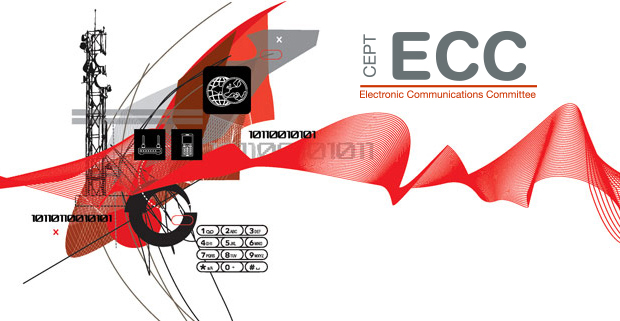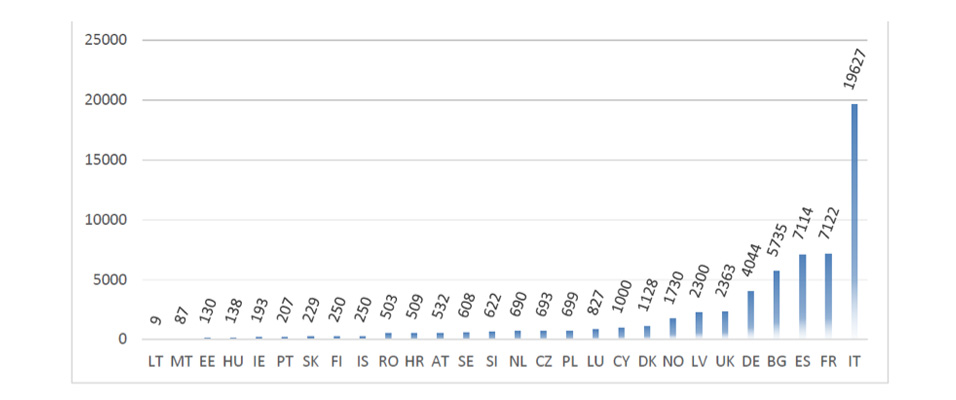eCall: An update
On 31 March 2018, eCall became a mandatory requirement in new passenger car and light commercial vehicles sold in the EU. Two years on what is the state of play? In this, the third in a series of ECC Newsletter articles on eCall examines the progress that has been made, issues that have arisen and plans for the future
The eCall initiative is aimed at bringing swift assistance to drivers involved in a collision anywhere in Europe. When a crash takes place, in-vehicle sensors are activated and automatically call the pan-European emergency number 112. It is also possible for the occupant of a vehicle to make an eCall manually by pressing a button in the vehicle. Not only is a voice connection established with the relevant Public Safety Answering Point (PSAP), the PSAP also receives other available information, such as GPS coordinates, over the same communications channel. This provides the PSAP with much more information to facilitate an appropriate and timely response to an incident. The European Commission estimates that eCall can speed up emergency response times by 40% in urban areas and 50% in rural areas. The number of fatalities could decrease by at least 4% and the number of severe injuries by 6%.
This is the third in a series of ECC Newsletter articles on eCall. The first was published in the November 2015 edition and addressed the eCall numbering challenge. The second was published in May 2017 which looked at all outstanding issues that needed to be addressed before the implementation date – getting ready for 2018. That second article followed a very successful ECC public workshop hosted by the ECO in Copenhagen on 31 January 2017.
Penetration rate of eCall-enabled vehicles
Mandatory eCall applies to all passenger car and light commercial vehicles (categories M1 and N1) that have undergone the type approvals process on or after 31 March 2018. According to the European Automobile Manufacturers' Association, more than 40 new vehicle types from a range of manufacturers have been type approved since 1 April 2018. GSA, the EU’s Global Navigation Satellite Systems Agency, estimates that there are 27 car brands offering over 65 models that are equipped with the system, with around 3 million vehicles sold on the EU market by the end of the first quarter of 2020. It will take some significant time for full penetration to be reached, though. Approximately 5% of the 300 million vehicles on European roads are upgraded each year.
As the number of eCall-enabled car sales increases, European PSAPs have started to experience a corresponding increase in the number of eCalls coming in. The European Commission’s Communications Committee (COCOM) 2019 Report, on the implementation of the European emergency number 112, provided some information on the number of eCalls placed in the EU in 2018 and 2019. This followed a survey of the 28 EU Member States.
Figure 1: eCalls placed in the EU. (Source: EC COCOM Working Document: Implementation of the single European emergency number 112 – Results of the thirteenth data-gathering round)
Two thirds of these eCalls were manually triggered and one third automatically triggered. It was also noted that these figures included test calls and no breakdown was provided between test calls, false calls and real life emergencies. Eleven Member States did provide more detailed information on the number of false calls which was estimated at 92% of all calls received.
Information available from France provides further insights. The PSAPs in France received around 12,000 eCalls in 2019. Some 83% were manually triggered and 17% were automatically triggered. Following a filtering process, only 3% were transferred to the 112 PSAP as real-life emergency calls. It was also noted that the Calling Line Identification (CLI) associated with 66% of these eCalls was an ITU global 15-digit number (+882/+883).
Feedback to date has been broadly positive demonstrating that the overall system for eCall is working well. However, there were some teething issues reported with faulty IVS systems, false calls from some after-market eCall devices, some issues related to roaming and some problems with eCall callback.
eCall Callback
If for some reason an eCall is dropped, the PSAP will initiate a callback to the vehicle. To do this, the PSAP must have a valid and dialable E.164 number to make the call. Many different types of numbering resources are being used for eCall and this involves many different actors in the supply chain, making a callback much more complex than the initial eCall. The following diagram provides an overview of the different actors involved in an initial eCall and an eCall callback to a +882/+883 ITU global number.
 Figure 2: Actors involved in eCall and eCall callback (Source: ITU)
Figure 2: Actors involved in eCall and eCall callback (Source: ITU)
An eCall is originated and terminated nationally and, as an eCall is a call to 112, any network within the national territory can be used to convey the call. This is similar to the “emergency calls only” message you might see on a mobile handset when in an area of poor coverage or roaming on other networks. In those cases, a "Limited Service State" is permitted to make the emergency call. In Limited Service State, an originating CLI is not presented to the PSAP operator when a call is made.
In its work on the numbering aspects of eCall, the ECC’s Working Group on Numbering and Networks (WG NaN) anticipated that callback could be problematic given the many different types of numbering ranges used. Some problems were encountered during eCall testing and several issues were identified that contribute to the problem:
- The enterprise telephone system (Private Automatic Branch Exchange – PABX or PBX) was not configured correctly to process incoming CLI for long numbers (15-digit numbers) and only a truncated CLI was presented to the PSAP operator. A callback was then not possible.
- Outgoing calls to unfamiliar numbers were barred on the PBX configuration.
- The numbers in question were not configured on the PSAP service provider's network.
- No CLI was presented to the PSAP because the initial eCall came from a device in "Limited Service State".
In 2019, WG NaN and Orange France carried out a survey of European PSAPs where they were asked to call a +882/+883 number and confirm that they could make the call. The survey received 22 responses and approximately half of the respondents could not make the call. The survey served as an awareness-raising exercise and the issue has since been resolved in many countries. To further raise awareness, the ITU published information on the matter in its Operational Bulletin in September 2019 and in an ITU Circular in May 2020. The ITU also published an article on the subject in March 2020.
The callback issue is not exclusive to ITU numbering ranges. As already mentioned, there are many different national and international numbering resources being used for the service based on global agreements between car manufacturers and mobile operators. France, for example, recommended to car manufacturers at the last meeting of the European eCall Implementation Platform in November 2019 that they should pay attention to the nature of the SIM cards with which they equip their cars. If they come from a service provider which does not have a significant global footprint of roaming agreements then the risk of "Limited Service State" eCalls will increase, rendering callback impossible.
The ECC is proposing an amendment to ECC Recommendation (17)04 on Numbering for eCall in order to provide a central reference point for information on all numbering ranges used for its operation. Operators and service providers planning to use certain numbering ranges for eCall will be able to notify those ranges, and the information will then be accessible to all other operators. This amendment is currently under public consultation and comments are welcome by 3 September 2020. Operators and service providers will also be encouraged to apply appropriate tariffs at wholesale and retail level for calls to these numbers. Call costs, while not a technical barrier to callback may present an economic barrier. PSAPs rely on public funding and should not have to pay high call charges for calling back vehicles while trying to assist citizens in life-and-death situations.
The ECC is also preparing a report on eCall callback which looks at a broad range of issues contributing to the callback problem such as PBX configuration, Limited Service State and call costs. The report is expected to be approved for public consultation in 2021.
Next generation eCall
As the eCall stakeholder community resolves some of the teething problems identified since eCall was implemented, attention is gradually turning to the future. Improving on the current set of eCall features, extending the requirements to all categories of vehicles and developing standardised solutions for after-market eCall are now high on the agenda. Work on standards development, technical requirements and testing procedures is already under way within the relevant standards development organisations (ETSI, CEN etc). The current regulated version of eCall is based on legacy 2G/3G circuit-switched network technology. Next generation eCall, based on 4G/5G technology, will need to co-exist with earlier systems. The current version of eCall must continue to be supported for the next 10 to 15 years as the move towards 4G/5G gathers momentum. PSAPs will also need to be upgraded to manage two types of incoming eCalls.
Some operators in Europe have announced plans for switching off 2G/3G services but switch off has far-reaching consequences for safety and security. In the context of eCall, regulatory certainty is required to inform investment decisions in new eCall technology, and a clearly defined migration path needs to be developed with input from all stakeholders. Switching off 2G/3G services may have similar impacts on other vertical sectors such as M2M/IoT, utility smart metering, smart grids and so on. There is still a long way to go in finding agreement on a migration path that meets the needs of all stakeholders.
After-market eCall is another area that is generating a lot of interest. SAFE-112, a project co-financed by the Connecting Europe Facility of the EU, has started work on defining the standards and specifications to pave the way for deployment of after-market systems for eCall. SAFE-112 aims to identify minimum performance and conformance requirements for after-market 112-eCall systems and devices, in order to avoid overload of PSAPs with false calls. It also seeks to deal with the necessary variants of after-market eCall systems that will use the single emergency number of 112.
eCall and roadworthiness tests
Discussions are also under way about adding eCall to the items to be tested during the mandatory periodic technical inspections of road vehicles. This follows a positive cost-benefit analysis, which concluded that adding eCall to roadworthiness tests would have a positive cost-benefit ratio. The concrete results vary depending on the complexity of testing. The extent of the testing is important. For example, if it is decided that a full end-to-end test is required then provisions will need to be made on electronic communications networks to handle test calls in a way that does not impact on PSAP daily operations. In the course of 2020 the European Commission plans to convene the respective expert group to discuss if eCall should be added to the periodic roadworthiness test by the means of a delegated act, and, if so, what should be the level of testing, the testing methods, reasons for failure and their severity.
In summary, a lot has been achieved in the last number of years to bring eCall to the market. As the penetration rate increases, road safety will improve and lives will be saved. The eCall journey is not over yet.
Freddie McBride
Deputy Director
European Communications Office




